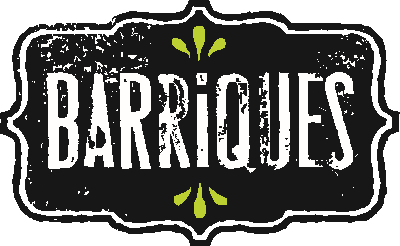Caffeinating
To know the history of decaf coffee you first need to know a bit about caffeine itself and to do that, we need to uncover a factoid about one of Germany’s most famous authors, Johann Wolfgang von Goethe. Goethe had a friend, Friedlieb Ferdinand Runge, who happened to be a chemist and who had impressed him w/ this ability to use deadly nightshade extract to dilate a cat’s pupils. That wide eyed cat reminded Goethe of himself after drinking coffee and being unable to sleep so he gave Runge some coffee beans and challenged him to figure out what it was about coffee that caused his sleeplessness. It took a few years but he eventually became the first scientist to isolate and identify that magical substance we know as caffeine. As we know now, caffeine is a naturally occurring alkaloid found in the leaves, seeds, and fruit of many plant species including coffee beans, tea leaves, and cacao seeds. Alkaloids are organic compounds that have physiological effects on humans and other living things, in this case it acts as a stimulant.
Decaffeinating
Identifying caffeine was one thing, removing it required almost another 100 years of work by scientists before they were able to extract it and still have a beverage left over that tasted somewhat like the real thing. In 1906, Ludwig Roselius, a German coffee salesman, patented the first decaffeination process for commercial use which involved steaming green coffee beans with water and various acids and then using Benzene as a solvent to dissolve the caffeine. Roselius’s method is no longer in use because Benzene, an organic chemical compound, is now recognized as a carcinogen by the American Cancer Society. Instead, companies using this solvent-based method have switched to other substances, predominantly ethyl acetate and methylene chloride, although there has been some controversy about the latter because exposure to high amounts of the substance can be toxic and lead to damage of the central nervous system. The US Food and Drug Administration has determined that neither of these solvents poses a health risk, but many claim that coffee decaffeinated with a solvent-based method has less flavor and depth than coffee decaffeinated by other means.
Pro-tip #1: If you see the words “naturally decaffeinated” when you buy decaf coffee online or at the store, it is likely that coffee was decaffeinated using Ethyl acetate.
Another German chemist, Kurt Zosel stumbled upon an alternative decaffeination method while working with supercritical carbon dioxide at a coal research institute. He realized that when the gas is heated and put under a lot of pressure, it enters a supercritical state that can be useful for separating different chemical substances — including separating caffeine from coffee when it's pumped through the beans. He patented this method in 1970 and it is still widely used today including to salvage the caffeine during the process and then using it in energy drinks, sodas and other products.
And finally we come to the Water Process decaffeination method. Although it was developed in the 30’s, it took more than 40 years before the Swiss Water Process method was used commercially on a large scale. The process works like this. First, a batch of green coffee beans are soaked in water. That water becomes saturated with all the soluble components found in coffee including caffeine which is then filtered out w/ carbon. This uncaffeinated liquid, called green coffee extract, is then added to columns of new, rehydrated, green coffee beans that still have their caffeine. The caffeine migrates from the beans to the green coffee extract as the beans and liquid seek equilibrium, until the beans are almost entirely caffeine-free. This 100% chemical free decaffeination method helps retain more of the beans flavors and aromas and it is the process that is used for all the decaf coffees we sell at Barriques. You may see it referred to as Mountain Water Process which is just another trademarked name for the same decaffeination process that takes place in a state of the art facility in Mexico vs the Canadian facility that produces Swiss Water decaf.
Pro-tip #2: None of the decaffeination methods remove 100% of the caffeine. However, where you might expect to enjoy 180 - 200mg of caffeine in your typical regular cup of coffee, decaf may contain 2 - 4mg per serving. The USDA requires that decaf coffee have 97% of the caffeine removed.
Barriques Water Processed Decaf Coffees
All of the decaf coffees we roast and all of the decaf blends we create are done with water processed decafs, either Swiss or Mountain. You’ll sometimes see this listed as MWP on our labels for Mountain Water Process. These coffees come to us at considerable cost given the significant amount of processing and transportation that is involved in getting them to our roastery. In addition, the producers and importers will generally select a higher quality of coffee to send through water process decaffeination given that it leaves more of the bean's character intact, resulting in a better cup of coffee for you. In fact, we think our chemical free decaf coffees are so good, you’ll have a very hard time distinguishing them from their caffeinated counterparts.









